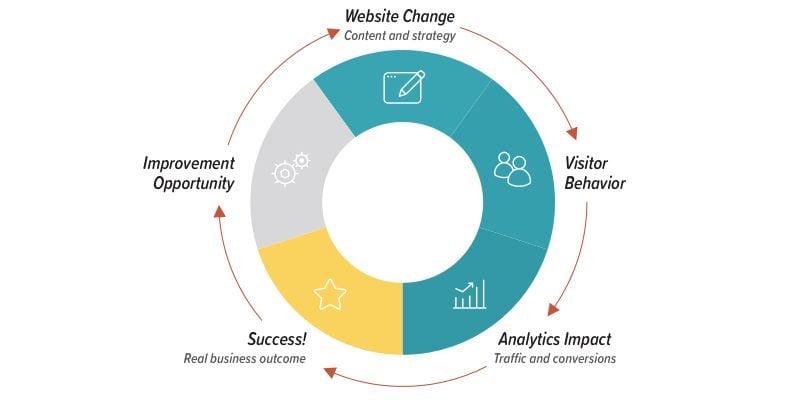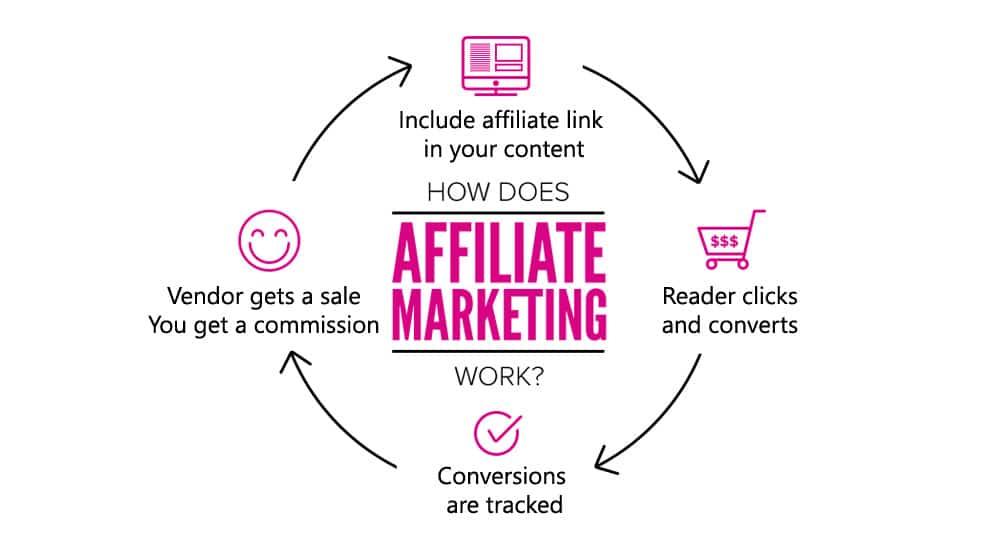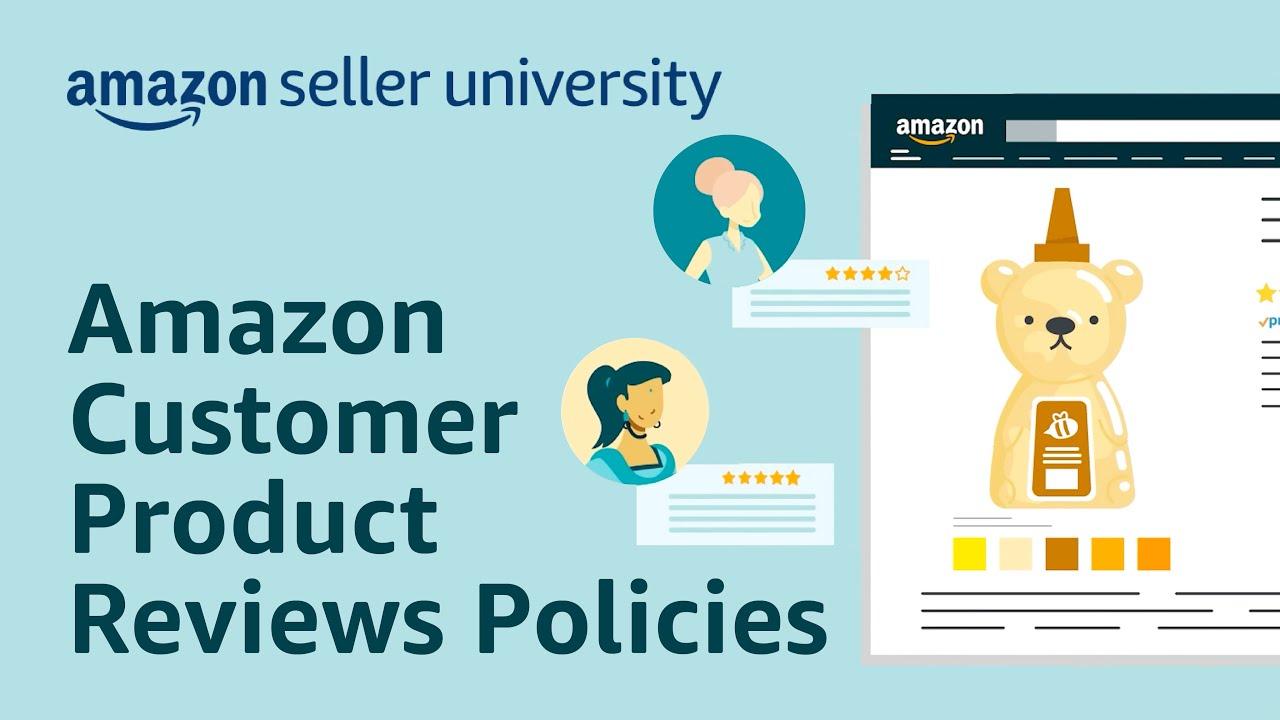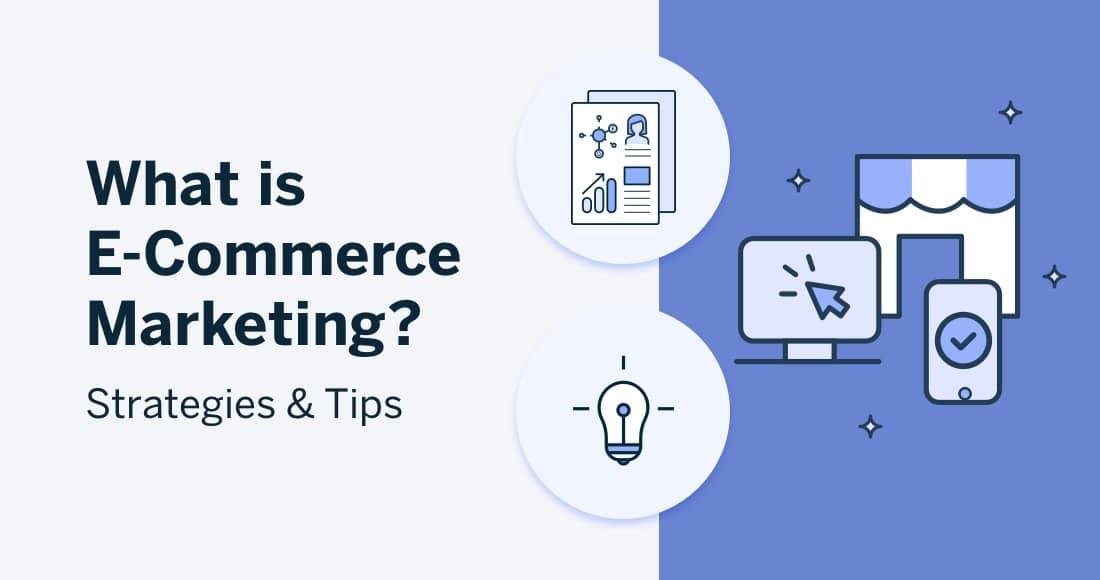
Are you ready to turn your website into a revenue-generating machine? If you’ve ever dreamed of tapping into the vast marketplace of Amazon while still maintaining your own unique brand, you’re in the right place! Selling Amazon products on your website can be a game-changer, providing you with an opportunity to earn passive income while offering your visitors valuable products they’ll love. In this article, we’ll break down the process into five simple steps that anyone can follow. Whether you’re a seasoned entrepreneur or just starting out, you’ll discover how easy it can be to integrate Amazon’s offerings into your own site. So, let’s dive in and unlock the potential of your website together!
Understanding the Benefits of Selling Amazon Products from Your Website
When you decide to sell Amazon products through your website, you open the door to a myriad of benefits that can help elevate your online business. First and foremost, leveraging Amazon’s vast product catalog allows you to offer your visitors a variety of products without the hassle of inventory management. This means you can focus on what you do best—creating engaging content and building your brand—while Amazon handles the logistics.
One significant advantage is the affordability of entering the e-commerce space. By integrating Amazon’s affiliate program, you can earn commissions on sales generated through your site without the need for upfront costs associated with purchasing inventory. This model is particularly beneficial for startups or small businesses looking to diversify their income streams.
Another key benefit is the credibility that comes with associating your website with a well-known platform like Amazon. Shoppers trust Amazon, and by selling their products, you enhance your site’s reputation. This trust can lead to higher conversion rates, as consumers feel more comfortable purchasing through a site that offers familiar products and well-established customer service standards.
Additionally, selling Amazon products can significantly enhance your SEO strategy. By creating product reviews, comparisons, and related content, you can attract more traffic to your website. This not only helps in driving visitors but also improves your site’s ranking on search engines. The more relevant content you produce, focused on your niche and Amazon products, the more likely you are to rank higher in search results.
Consider leveraging the power of targeted marketing. Since Amazon has a vast range of products across multiple categories, you can tailor your offerings to match the interests of your specific audience. This personalization increases the likelihood of conversions as you can present products that resonate with your visitors’ needs and preferences.
| Benefit | Description |
|---|---|
| Inventory-Free | No need to hold stock; sell directly from Amazon’s catalog. |
| Low Startup Costs | Join affiliate programs without major investments in products. |
| Increased Trust | Leverage Amazon’s reputation to boost your credibility. |
| SEO Enhancement | Create content that improves your visibility on search engines. |
| Targeted Marketing | Offer products that align with your audience’s preferences. |
selling Amazon products from your website allows for easy scalability. As your website grows, you can expand your product offerings without the complications that come with traditional retail. This flexibility enables you to experiment with different niches, adjust your marketing strategies, and ultimately maximize your revenue potential.
Choosing the Right Niche to Maximize Your Earnings
When it comes to selling Amazon products on your website, selecting the right niche is crucial for maximizing your earnings. A well-chosen niche not only helps you attract the right audience but also positions you favorably against competitors. Here are some key points to consider when deciding on your niche:
- Market Demand: Research current trends to find out what products are in demand. Use tools like Google Trends or Amazon’s Best Sellers list to gauge popularity.
- Competition Analysis: Identify competitors in potential niches. A niche with too much competition can be hard to penetrate, while one with too little might not yield enough traffic.
- Personal Passion: Choose a niche that aligns with your interests. If you are passionate about the products, your enthusiasm will shine through in your content, making it more engaging for visitors.
- Profit Margins: Consider the commission rates you can earn through Amazon’s affiliate program for different product categories. Higher-ticket items often yield better returns.
- Audience Targeting: Define your target audience. What are their needs and preferences? Tailor your niche to solve their problems or fulfill their desires.
Once you have narrowed down potential niches, create a simple table to compare them based on critical factors:
| Niche | Market Demand | Competition Level | Potential Earnings |
|---|---|---|---|
| Fitness Equipment | High | Medium | $$$ |
| Home Decor | Medium | High | $$ |
| Pet Products | High | Low | $$$ |
| Tech Gadgets | High | Medium | $$$ |
After reviewing your options, it’s essential to test the waters. Start by creating content related to your selected niche and analyze the response from your audience. Use analytics tools to track which products resonate the most and adjust your strategy accordingly. Engaging with your audience through forums or social media can provide valuable insights into their preferences.
Remember, the ideal niche isn’t just about high demand or profitability; it’s also about sustainability. Trends can change rapidly, so think long-term. Focus on building a loyal community around your niche, which will help you weather market fluctuations and maintain consistent traffic to your website.
Setting Up Your Amazon Affiliate Account with Ease
To get started with your Amazon affiliate journey, the first step is to create your Amazon Associates account. The process is straightforward, but a few key elements can help you set up your account without a hitch.
Begin by visiting the Amazon Associates homepage. Click on the “Join Now for Free” button. This will redirect you to a sign-in page where you can use your existing Amazon account or create a new one specifically for affiliate marketing.
Once signed in, you’ll need to provide some basic information:
- Your website or mobile app details: Enter the URL of your site or app where you plan to promote Amazon products.
- Preferred store ID: Choose a store ID that reflects your brand or website focus.
- Your payment and tax information: Fill in the required tax forms and select your payment method, such as direct deposit or Amazon gift cards.
After submitting your application, you will receive a confirmation email. Now, it’s essential to understand the different tools available to promote products effectively. Amazon offers a range of resources that can enhance your affiliate marketing efforts:
- SiteStripe: This handy toolbar allows you to create affiliate links directly from the Amazon product page, making it easy to include links in your content.
- Product Links: You can customize text links, image links, or even a combination of both to suit your website’s aesthetics.
- Banner Ads: These visually appealing ads can be placed in various areas of your site to attract visitors’ attention.
Make sure to adhere to Amazon’s guidelines when setting up your account and using their links. Familiarize yourself with the rules surrounding disclosures about affiliate links, as well as how to maintain compliance with their terms of service. This is crucial not only for your account’s longevity but also for building trust with your audience.
| Tool | Description |
|---|---|
| SiteStripe | Create affiliate links directly on Amazon’s site. |
| Product Links | Customizable text and image links for your content. |
| Banner Ads | Eye-catching ads to boost visibility on your site. |
Once your account is set up and you’re familiar with the available tools, it’s time to start promoting your chosen Amazon products. Remember, the key to successful affiliate marketing is not just about linking products but also creating engaging content that resonates with your audience. Share your personal experiences, provide insights, and build a narrative around the products to encourage your visitors to click through and make a purchase.
Creating Compelling Content That Sells
When it comes to selling Amazon products on your website, the key to success lies in creating content that truly resonates with your audience. It’s not just about listing products; it’s about crafting a narrative that compels visitors to click that “Buy Now” button. Here’s how you can do it.
Know Your Audience: Before you start writing, take the time to understand who your audience is. What are their needs, desires, and pain points? Tailoring your content to speak directly to these aspects will make it more engaging and relevant. Consider the following:
- Demographics: Age, gender, location
- Interests: Hobbies, favorite brands, lifestyle choices
- Challenges: Problems they face that your products can solve
Use Storytelling Techniques: People connect with stories. Instead of simply describing a product, share a story that highlights its benefits. For example, if you’re promoting a kitchen gadget, illustrate how it transformed a busy mom’s cooking experience. Here’s a simple structure to follow:
- Setup: Introduce the scenario and the problem.
- Conflict: Describe the challenges faced.
- Resolution: Showcase how the product provides a solution.
Incorporate Visuals: A picture is indeed worth a thousand words. Use high-quality images and videos to complement your content. Visuals not only grab attention but also help in demonstrating the product in action. Ensure your visuals are:
- High resolution and clear
- Relevant to the product
- Incorporated naturally within the content
Highlight Customer Reviews: Social proof can be a powerful motivator. Compile and display reviews from customers who have bought and loved the product. This can alleviate doubts and encourage potential buyers. You can create a simple table format to present testimonials effectively:
| Customer Name | Review | Rating |
|---|---|---|
| Jane Doe | “This product changed my kitchen game!” | ⭐⭐⭐⭐⭐ |
| John Smith | “Easy to use and very effective!” | ⭐⭐⭐⭐ |
Call to Action (CTA): Every piece of content should lead your audience to take action. Make your CTAs clear and engaging. Instead of a generic “Buy Now,” try something like “Transform Your Cooking Today!” This creates a sense of urgency and encourages immediate action.
By combining these elements, you can create content that not only informs but also motivates your audience to make a purchase. Remember, it’s about creating a connection, providing value, and ultimately guiding your visitors down the path to the checkout.

Optimizing Your Website for Better Visibility
When it comes to increasing the visibility of your website and boosting your Amazon product sales, a few key strategies can make all the difference. The digital landscape is crowded, but with a little know-how and some targeted efforts, you can stand out from the competition. Here are some essential tips to help you optimize your website:
- Keyword Research: Begin by identifying the keywords your target audience is searching for. Use tools like Google Keyword Planner or SEMrush to find high-volume, low-competition keywords relevant to your niche.
- On-Page SEO: Optimize your website’s content by integrating these keywords naturally into your headings, subheadings, and body text. Don’t forget to optimize meta titles and descriptions to improve click-through rates.
- Mobile Optimization: Ensure your website is mobile-friendly. With an increasing number of users shopping on their mobile devices, a responsive design will enhance user experience and increase time spent on your site.
- Quality Content: Create engaging, high-quality content that provides value to your visitors. Consider writing blog posts, guides, or product reviews that incorporate your Amazon products and naturally encourage purchases.
- Fast Loading Speeds: Optimize images, leverage browser caching, and minify CSS/JS files to improve your website’s loading speed. A slow website can lead to high bounce rates and lost sales.
Building backlinks is another powerful way to enhance your website’s authority and visibility. Engage with other bloggers and influencers in your niche to guest post, collaborate, or simply exchange links. This strategy not only improves your SEO but also drives referral traffic to your site.
Implementing a clear call-to-action (CTA) on your product pages can significantly improve conversion rates. Use persuasive language and create buttons that stand out. For example:
| CTA Example | Purpose |
|---|---|
| Buy Now | Direct purchase of the product |
| Learn More | Encourages further engagement with product details |
| Add to Cart | Invites users to consider multiple products |
Lastly, don’t underestimate the power of social media. Share your content, engage with your audience, and promote your products on platforms where your potential buyers are active. Use compelling visuals and authentic storytelling to connect with users emotionally, enhancing their likelihood of visiting your site.
By focusing on these optimization strategies, you can significantly improve your website’s visibility, driving more traffic and ultimately increasing your Amazon product sales. Each adjustment you make can lead to greater opportunities, so start implementing these tips today!

Driving Traffic to Your Affiliate Links
Once you’ve set up your affiliate links, the next challenge is to drive traffic to them effectively. Without a steady stream of visitors, even the most compelling offers can fall flat. Here are some innovative strategies to help you attract more clicks and boost your affiliate sales.
- Leverage Social Media: Share your content across platforms like Facebook, Twitter, and Instagram. Tailor your posts to suit each platform’s audience. Engaging visuals and catchy captions can spark interest and encourage shares.
- Utilize SEO Techniques: Optimize your content for search engines. Use relevant keywords, meta descriptions, and alt text for images. This will improve your site’s visibility, making it easier for potential buyers to find your affiliate links.
- Email Marketing: Build a mailing list and send regular newsletters featuring your favorite products. Personalize your emails to make them more engaging, and include clear calls to action that guide readers to your affiliate links.
- Content Marketing: Create helpful, informative articles or blog posts that naturally incorporate your affiliate products. This not only adds value for your readers but also positions your links as trustworthy recommendations.
Another effective strategy is to showcase product reviews or comparisons. People love to read opinions before making a purchase. By providing thoughtful insights and linking to Amazon products, you build credibility and increase the likelihood of conversion.
Consider using paid advertising to further amplify your reach. Platforms like Google Ads or Facebook Ads can help target specific demographics. Craft compelling ad copy and use eye-catching visuals to attract potential customers. Just ensure that your ads comply with the advertising guidelines of the platform.
For a more structured approach, you might want to track your traffic sources. Use tools like Google Analytics to analyze where your visitors are coming from and which links are performing best. This information can guide your future marketing efforts and help you refine your strategies.
| Traffic Source | Pros | Cons |
|---|---|---|
| Social Media | High engagement potential | Requires consistent content creation |
| SEO | Long-term traffic benefits | Time-consuming to see results |
| Email Marketing | Direct reach to interested customers | Requires building a subscriber list |
| Paid Ads | Immediate visibility | Can be expensive if not managed well |
Lastly, engage with your audience through comments and social media interactions. Building a community around your content creates trust and loyalty, leading to higher conversion rates. Respond to queries, ask for feedback, and make your audience feel valued. The more your readers feel connected to you, the more likely they are to support your affiliate endeavors.

Using Social Media to Boost Your Sales
Leveraging social media can dramatically enhance your sales potential and increase traffic to your website where you sell Amazon products. The key is to create a vibrant online presence that resonates with your target audience and encourages engagement. Here’s how to effectively harness the power of social media:
- Choose the Right Platforms: Not all social media platforms are created equal. Identify where your audience spends their time. For example, Instagram and Pinterest are great for visually appealing products, while Facebook and Twitter are excellent for engaging discussions and promotions.
- Content is King: Share high-quality content that showcases your products. Use stunning images, engaging videos, and informative articles that highlight the benefits of the products you’re selling. Remember, your content should not only sell but also provide value.
- Utilize Influencer Marketing: Partnering with influencers in your niche can amplify your reach. An influencer’s endorsement can lend credibility to your products and introduce them to a wider audience. Make sure to choose influencers whose values align with your brand.
- Run Promotions and Giveaways: Everyone loves a good deal! Create social media-exclusive promotions or giveaways to attract followers and increase your visibility. This encourages sharing and can lead to higher traffic to your website.
- Engage with Your Audience: Don’t just post and ghost! Respond to comments, answer questions, and engage with your followers. Building a community around your brand fosters loyalty and can lead to increased sales.
Tracking your social media efforts through analytics is essential. Monitor your engagement rates, click-through rates, and conversion rates to understand what works and what doesn’t. Use this data to refine your strategy:
| Metric | Purpose | Action |
|---|---|---|
| Engagement Rate | Measures how well your content resonates | Adjust content based on audience interaction |
| Click-Through Rate | Tracks how many people visit your site from social media | Optimize posts for higher link clicks |
| Conversion Rate | Represents sales made from social media traffic | Test different strategies for boosting sales |
don’t forget to promote your social media accounts on your website. Add social media buttons to your pages, encouraging visitors to connect with you on their preferred platforms. This can not only build your following but also keep your audience updated on new products, promotions, and more.
By establishing a strong social media strategy, you can significantly boost your sales and drive consistent traffic to your website. Remember, the goal is to create a two-way conversation with your audience, making them feel valued while guiding them towards making a purchase.

Tracking Your Performance and Making Smart Adjustments
Once your Amazon products are live on your website, tracking their performance becomes essential to your success. By analyzing key metrics, you can gain valuable insights that will inform your strategies and help maximize your earnings. Here are some effective ways to monitor your progress:
- Sales Data: Keep an eye on the number of products sold, revenue generated, and any patterns in purchases. Tools like Amazon Associates can provide detailed reports.
- Traffic Analysis: Utilize Google Analytics to track the number of visitors to your site and how they interact with your product links. Look for trends in traffic sources.
- Conversion Rates: Measure the percentage of visitors who click on your affiliate links versus those who make a purchase. A low conversion rate may indicate the need for adjustments.
- Customer Feedback: Pay attention to reviews and comments on your products. This feedback can help you understand what your audience values and what needs improvement.
After gathering this data, it’s time to make some smart adjustments. Consider the following strategies to enhance your performance:
- Optimize Content: If certain products aren’t selling well, revisit your product descriptions and optimize them for SEO. Incorporate relevant keywords to improve visibility.
- Test Different Promotions: Experiment with various promotional strategies, such as limited-time discounts or bundled offers, to see what resonates most with your audience.
- Adjust Targeting: Refine your audience targeting based on demographics and behavior. If certain segments convert better, tailor your marketing efforts accordingly.
- Update Visuals: High-quality images and compelling graphics can significantly impact conversion rates. Regularly refresh your visuals to keep your site looking sleek and engaging.
To visualize your progress, consider creating a simple tracking table to summarize your performance metrics. Here’s a basic structure you might use:
| Metric | Current Value | Last Month | Change |
|---|---|---|---|
| Sales Volume | $1,200 | $950 | +26% |
| Site Traffic | 5,000 visits | 4,200 visits | +19% |
| Conversion Rate | 3.5% | 2.8% | +25% |
As you continue to track these metrics and make necessary adjustments, you’ll find your strategy becomes more refined and effective. Remember, selling online is a dynamic process, and flexibility is key to staying ahead of the competition.

Building Trust with Your Audience for Long-Term Success
To effectively sell Amazon products on your website, establishing a trustworthy relationship with your audience is paramount. When your visitors believe in your integrity and expertise, they are far more likely to engage with your content and make purchases through your recommendations. Here are some strategies to foster that trust:
- Be Transparent: Share your journey and experiences honestly. Whether it’s your success stories or challenges faced, openness creates a personal connection.
- Showcase Authentic Reviews: Instead of just listing products, provide detailed reviews backed by your own experiences. Highlight both pros and cons to demonstrate your genuine opinion.
- Engage with Your Audience: Respond to comments and queries promptly. Encouraging dialogue shows that you value your audience’s thoughts and concerns.
- Utilize Quality Content: Invest time in creating informative and engaging content that addresses your audience’s needs and interests. Well-researched articles build credibility.
Another key aspect is to ensure your website is user-friendly and secure. A professional-looking site instills confidence. Utilize HTTPS to protect your users’ data, and make navigation easy. This not only enhances user experience but also signals that you care about their safety.
Additionally, consider including a FAQ section to address common concerns about purchasing products through your links. This proactive approach can alleviate potential hesitations and reinforce your dedication to customer satisfaction.
| Trust-Building Tactics | Benefits |
|---|---|
| Personal stories | Enhances relatability |
| Authentic product reviews | Boosts credibility |
| Responsive engagement | Strengthens community |
| Quality content creation | Establishes authority |
Lastly, consider introducing a loyalty program or exclusive offers for your audience. Rewarding their loyalty not only encourages repeat visits but also strengthens their trust in your brand. When customers feel appreciated, they are more likely to recommend your site to others.
By prioritizing trust-building in your strategy, you’re not just selling products; you’re cultivating a community of loyal customers who believe in your recommendations. This approach paves the way for sustainable success in the ever-evolving e-commerce landscape.

Leveraging Email Marketing to Increase Conversions
In the competitive world of online sales, harnessing the power of email marketing can significantly boost your conversion rates. By creating compelling email campaigns tailored to your audience, you can guide potential customers from browsing to purchasing. Here’s how to effectively leverage email marketing to enhance your sales strategy.
1. Build a Targeted Email List
Your email marketing success starts with a relevant and engaged email list. Focus on attracting subscribers who are genuinely interested in your niche. Use strategies such as:
- Offering exclusive deals or discounts for sign-ups.
- Creating valuable content that encourages visitors to join your list.
- Utilizing social media to drive traffic to your subscription page.
2. Craft Compelling Subject Lines
The subject line of your email is your first impression. Make it count! Aim for clear, intriguing, and benefit-oriented subject lines that compel recipients to open your emails. A/B testing different subject lines can help you identify what resonates best with your audience.
3. Personalize Your Emails
Personalization goes beyond just using the recipient’s name. Tailor your content based on their behavior, preferences, and past purchases. For instance, if a subscriber showed interest in a specific product, send them personalized recommendations related to that item. This increases the chances of conversion as the email feels more relevant to them.
4. Use Eye-Catching Designs
Ensure your emails are visually appealing. A well-designed email not only captures attention but also enhances readability. Use a clean layout, high-quality images, and your branding elements. Consider mobile optimization since many users check emails via their smartphones.
5. Include Clear Calls to Action (CTAs)
Your emails should have a clear purpose. Incorporate strong and specific calls to action that guide readers towards the next step, whether it’s visiting your product page or taking advantage of a limited-time offer. Make your CTA buttons stand out with contrasting colors and concise text.
6. Analyze and Optimize
After sending out your campaigns, analyze the results. Metrics such as open rates, click-through rates, and conversion rates will give you insights into what’s working and what needs improvement. Use these insights to refine your strategies for future campaigns.
| Metric | Importance |
|---|---|
| Open Rate | Indicates how effective your subject lines are |
| Click-Through Rate (CTR) | Measures engagement and interest in your content |
| Conversion Rate | Directly relates to your email’s effectiveness in driving sales |
By implementing these strategies, you can create powerful email marketing campaigns that not only engage your audience but also drive conversions. Remember, the goal is to build a relationship with your subscribers while providing them with value that leads to sales.

Exploring Additional Revenue Streams Beyond Amazon
Diversifying your income is essential for sustainable growth in any business venture. While selling on Amazon can be lucrative, it’s wise to explore other avenues that can complement your existing efforts and increase your overall revenue. Here are a few ideas to get you started:
- Your Own E-commerce Store: Launching your own online store can give you complete control over branding, pricing, and customer interaction. With platforms like Shopify or WooCommerce, you can easily set up a storefront that showcases your Amazon products, allowing customers to purchase directly from you.
- Affiliate Marketing: By joining affiliate programs related to your niche, you can earn commissions by promoting other products on your website. This can be a great way to generate additional income while providing value to your audience.
- Digital Products: Consider creating digital products like e-books, online courses, or printables that align with your market. Not only do these products have high-profit margins, but they also require minimal overhead costs.
- Subscription Services: If you have a loyal customer base, consider offering subscription boxes or exclusive memberships for premium content. This generates a steady income stream while keeping your audience engaged.
To visualize the potential revenue diversification, here’s a simple table that illustrates various options along with their potential benefits:
| Revenue Stream | Benefits |
|---|---|
| Your Own E-commerce Store | Full control over branding and customer experience |
| Affiliate Marketing | Passive income with minimal effort |
| Digital Products | High margins and low overhead |
| Subscription Services | Recurring revenue and customer loyalty |
In addition to these, consider leveraging social media platforms. By building a strong presence on sites like Instagram or Pinterest, you can drive traffic to your website and Amazon listings. Social media influencers can also be a powerful ally in promoting your products, expanding your reach, and tapping into new audiences.
don’t underestimate the power of email marketing. Building a robust email list allows you to maintain direct communication with your customers, promoting not only your Amazon products but also any new offerings you may introduce. Engaging newsletters, exclusive discounts, and valuable content can keep your audience coming back for more.

Staying Compliant with Amazons Policies and Guidelines
When venturing into selling Amazon products on your website, adhering to Amazon’s policies and guidelines is crucial to ensure a smooth and compliant experience. By aligning your strategies with their requirements, you not only protect your account but also build trust with your customers. Here are some key points to consider:
- Understand the Affiliate Program: Familiarize yourself with the Amazon Associates Program. This program has specific rules about how you can promote Amazon products, including the use of links, banners, and content.
- Correct Use of Links: Always use the affiliate links provided by Amazon. This ensures that you receive credit for sales generated through your site. Direct linking to Amazon product pages without affiliate tracking is a no-go.
- Disclosure Requirements: Make it clear to your audience that you may earn a commission from purchases made through your links. This transparency helps build trust and is a legal requirement.
- Content Guidelines: Your content should be original, informative, and relevant. Avoid copying product descriptions or using misleading information, as this violates Amazon’s content policies.
Additionally, it’s essential to stay updated on Amazon’s terms of service and policies, as they can change frequently. Here’s a quick overview of some critical areas to monitor:
| Policy Area | Key Points |
|---|---|
| Advertising Standards | Adhere to guidelines on promotional content and avoid making false claims. |
| Branding | Do not use Amazon’s logo or trademarked terms improperly. |
| Data Security | Respect user privacy and comply with data protection laws when handling customer information. |
| Product Representation | Ensure accurate representation of products and avoid misleading images. |
Another important aspect is to monitor your performance metrics. Amazon provides various tools to track your referral earnings and traffic sources. Regularly checking these metrics can help you understand which strategies are working and which need adjustment. Remember to constantly optimize your approach, whether through SEO, content quality, or marketing strategies, all while remaining within Amazon’s guidelines.
engage with the Amazon community through forums and groups where you can share experiences and insights. This not only helps you learn from others but also keeps you informed about any updates or best practices in the affiliate marketing landscape. By committing to compliance, you can cultivate a profitable and sustainable partnership with Amazon while providing value to your audience.

Continuously Learning and Adapting in the E-commerce Landscape
In the fast-paced world of e-commerce, staying ahead requires a commitment to continuous learning and adaptation. As you embark on the journey of selling Amazon products on your website, it’s essential to embrace new trends, technologies, and strategies that will enhance your online business.
First things first, conduct thorough market research. Understanding your target audience is crucial. Dive deep into what products resonate with them, their buying behaviors, and preferences. Leverage tools like Google Trends and Amazon Best Sellers to identify popular items that align with your niche. By staying informed about your market, you’ll be able to tailor your offerings to meet customer demands.
Next, optimize your website for conversions. Ensure that your site is user-friendly, visually appealing, and mobile-responsive. A seamless shopping experience encourages customers to linger and explore. Consider implementing the following:
- Clear product descriptions: Use engaging language to highlight the benefits.
- High-quality images: Invest in professional photography to showcase your products.
- Trust signals: Display customer reviews, ratings, and secure payment options prominently.
Furthermore, integrating Amazon’s affiliate program can significantly enhance your earning potential. By incorporating affiliate links, you can earn a commission on every sale made through your referrals. This allows you to monetize your traffic effectively without holding inventory. Ensure to follow Amazon’s guidelines while crafting content around these products, as compliance is crucial for ongoing success.
Don’t forget the power of effective marketing strategies. Utilize social media platforms to promote your products and engage with your audience. Consider creating informative content, like blogs or videos, that provide value and encourage visitors to explore your offerings. Email marketing is another potent tool; build a mailing list to keep potential customers informed about new arrivals and special promotions.
Lastly, analyze your performance regularly. Utilize analytics tools to track user behavior on your site. Monitor which products perform best and adjust your strategies accordingly. Use A/B testing to experiment with different layouts, headlines, and calls to action. This data-driven approach will enable you to make informed decisions that lead to higher conversions and increased sales.
| Key Metrics | Importance |
|---|---|
| Conversion Rate | Indicates the percentage of visitors who make a purchase. |
| Average Order Value | Helps you understand customer spending behavior. |
| Return on Investment (ROI) | Measures the profitability of your marketing efforts. |
By adopting a mindset of continuous learning and adapting your strategies, you can navigate the evolving e-commerce landscape with confidence. Embrace the journey, stay informed, and watch your online sales soar as you harness the full potential of selling Amazon products on your website.
Frequently Asked Questions (FAQ)
Q&A: How to Sell Amazon Products on Your Website in 5 Steps
Q1: Why should I consider selling Amazon products on my website?
A1: Great question! Selling Amazon products on your website can be a fantastic way to generate passive income. You tap into Amazon’s vast inventory and trusted reputation, allowing you to offer a wide variety of products without having to manage any inventory yourself. Plus, with Amazon’s affiliate program, you can earn commissions on sales made through your referrals, which means you can make money while you sleep!
Q2: What do I need to get started?
A2: To kick things off, you’ll need a website (or a blog) and a bit of passion for promoting products you love. If you don’t have a website yet, don’t worry! Platforms like WordPress or Wix make it super easy to set one up. Once your site is ready, you can sign up for the Amazon Associates program to gain access to affiliate links and banners.
Q3: What are the five steps to successfully sell Amazon products?
A3: It’s easier than you might think! Here’s a quick overview:
- Choose Your Niche: Focus on a specific area of interest where you can provide value and connect with your audience.
- Join the Amazon Associates Program: Sign up to get your unique affiliate links, which track the sales you generate.
- Create Quality Content: Write engaging blog posts, reviews, or guides that naturally incorporate your affiliate links. Remember, authenticity is key!
- Promote Your Content: Use social media, SEO strategies, and email marketing to drive traffic to your site and get people clicking on those links.
- Track Your Progress: Monitor clicks and sales through the Amazon Associates dashboard to see what’s working and tweak your strategy as necessary.
Q4: How do I choose the right products to promote?
A4: Look for products that resonate with your audience and fit your niche. It helps to choose items that you’re genuinely interested in or have experience with. Check out Amazon’s best-seller lists or trending products to find popular items. Also, consider the commission rates—some products offer better payouts than others!
Q5: Can I use social media to promote my Amazon products?
A5: Absolutely! Social media is a powerhouse for driving traffic. Share your content, post product reviews, or even create engaging videos showcasing how to use the products. Just remember to follow Amazon’s guidelines regarding affiliate links on social platforms. Being genuine and transparent about your affiliate status can help build trust with your audience.
Q6: What if I’m not seeing sales right away?
A6: Patience is key! Building an audience and gaining traction takes time. Focus on creating high-quality content and promoting it effectively. Analyze which products or posts get the most engagement and adjust your approach as needed. Consistency and perseverance are your best friends in this journey!
Q7: Any final tips for someone just starting out?
A7: Don’t get discouraged if things don’t take off immediately. Keep learning and experimenting with different types of content and marketing strategies. Engage with your audience, ask for feedback, and refine your approach. With dedication and the right tactics, you can turn your website into a thriving source of income through Amazon products!
Feel free to ask more questions, and let’s turn your website into an Amazon affiliate success story!
The Conclusion
As we wrap up our journey through the five essential steps to selling Amazon products on your website, I hope you’re feeling empowered and ready to take action! Remember, this isn’t just about adding a few links here and there; it’s about creating a seamless shopping experience for your visitors while earning some extra income.
By carefully choosing the right products, optimizing your site for conversions, and engaging your audience with great content, you can transform your website into a thriving marketplace. So why wait? Dive in and start implementing these strategies today.
The possibilities are endless, and with a little determination and the right approach, you can turn your website into a profitable venture. If you have any questions or want to share your success stories, drop a comment below. Let’s support each other on this exciting journey! Happy selling!






